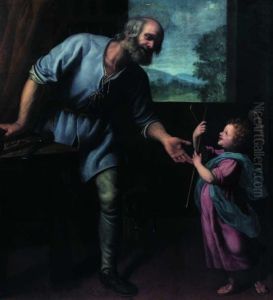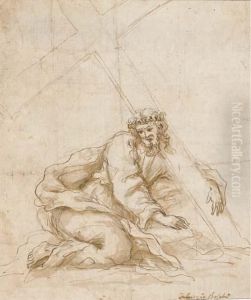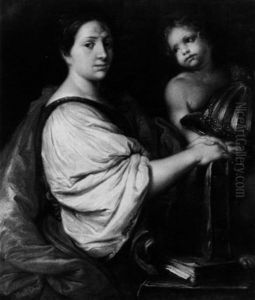Fabrizio Boschi Paintings
Fabrizio Boschi was an influential Italian painter of the late Renaissance and early Baroque periods, born in Florence in 1572. His artistic journey is deeply rooted in the rich cultural and artistic heritage of Florence, a city that was at the forefront of the Italian Renaissance. Boschi was known for his religious compositions, frescoes, and altarpieces, which reflect the intense spiritual and artistic fervor of his time.
Boschi received his initial training in the workshop of his father, Michele Boschi, also a painter, which grounded him in the fundamentals of Renaissance art. He later became a pupil of Domenico Passignano, under whose guidance he further honed his skills and developed a more dynamic and expressive style. His work was also influenced by the Mannerist style, evident in his use of dramatic light, shadow, and elongated figures.
Throughout his career, Boschi worked on several important commissions that contributed to his reputation as a master painter. One of his most notable works includes the frescoes in the Chapel of St. Helena in the Basilica of Santa Croce, Florence, which showcase his skill in creating vivid, dramatic compositions that engage the viewer. His work was characterized by its emotional intensity and technical precision, qualities that made him a sought-after artist for religious institutions and private patrons alike.
Boschi's influence extended beyond his lifetime, as his paintings were studied and admired by later generations of artists. He was a contemporary of other great Florentine painters, such as Matteo Rosselli and Domenico Passignano, and his work contributed to the vibrant artistic environment of Florence during the transition from the Renaissance to the Baroque period. Despite facing competition from other talented artists of his time, Boschi's work retained a distinctive identity, marked by his deep understanding of religious themes and his ability to convey complex emotional states through his art.
Fabrizio Boschi passed away in Florence in 1642, leaving behind a legacy that continues to be celebrated for its contribution to the development of Baroque art in Italy. His paintings remain in collections and churches across Italy, testifying to his enduring impact on the art world.














